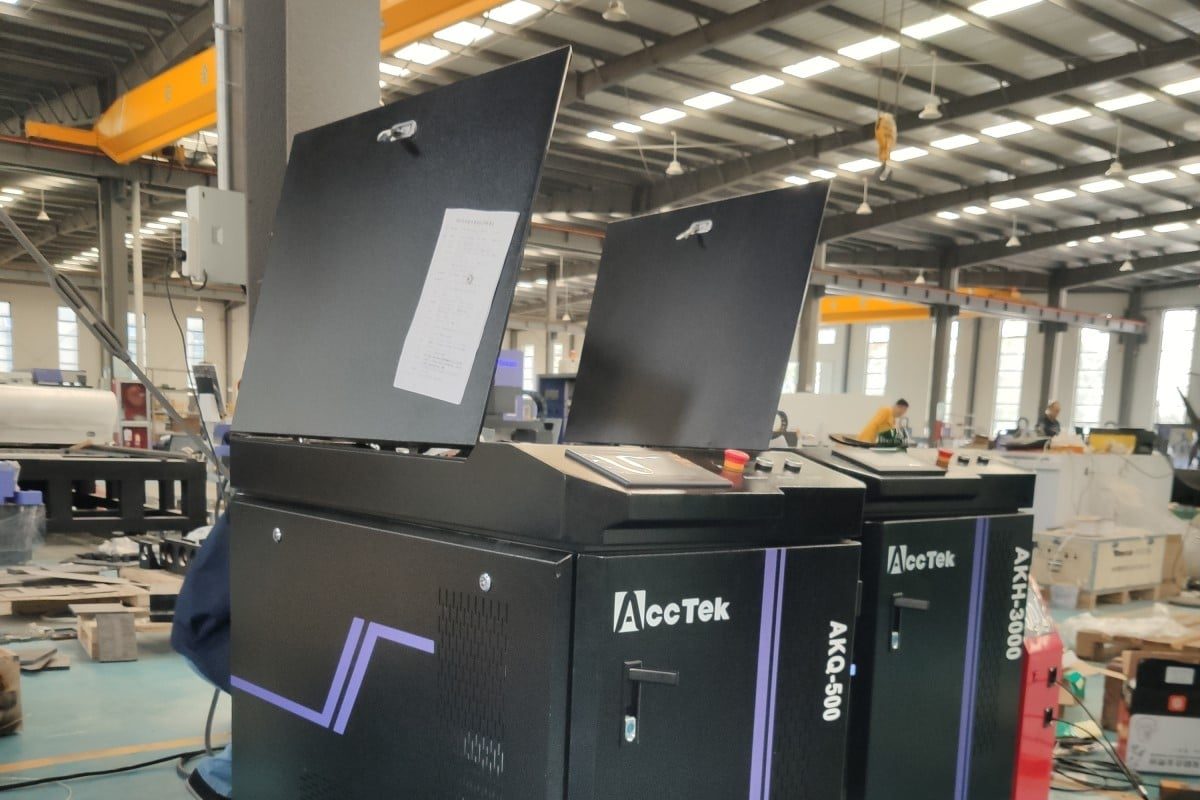
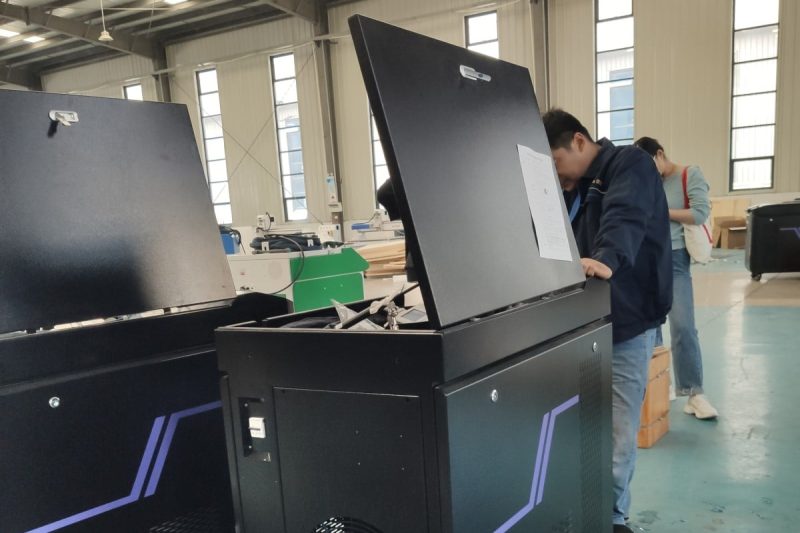
เรียนรู้พื้นฐานการทำความสะอาดด้วยเลเซอร์
กระบวนการทำความสะอาดด้วยเลเซอร์
ชิ้นส่วนเครื่องทำความสะอาดเลเซอร์
เครื่องทำความสะอาดเลเซอร์ทั่วไปประกอบด้วยส่วนประกอบสำคัญหลายส่วน ได้แก่:
- เครื่องกำเนิดเลเซอร์: นี่คือหัวใจของเครื่องทำความสะอาดด้วยเลเซอร์และสร้างลำแสงเลเซอร์พลังงานสูงเพื่อการทำความสะอาด มีเลเซอร์หลายประเภทให้เลือก เช่น เครื่องกำเนิดเลเซอร์ไฟเบอร์ เครื่องกำเนิดเลเซอร์แบบพัลส์ และเครื่องกำเนิดเลเซอร์คลื่นต่อเนื่อง (CW)
- เครื่องสแกนและอุปกรณ์ออปติก: ส่วนประกอบเหล่านี้ทำหน้าที่ควบคุมทิศทางและโฟกัสของลำแสงเลเซอร์ จึงสามารถกำหนดพื้นที่ที่เลเซอร์จะทำความสะอาดในแต่ละครั้งได้
- ระบบกำจัดสิ่งปนเปื้อน: เครื่องทำความสะอาดด้วยเลเซอร์มักติดตั้งระบบระบายอากาศเพื่อกำจัดอนุภาคและสิ่งปนเปื้อนที่ปล่อยออกมาในระหว่างกระบวนการทำความสะอาด
- ระบบทำความเย็น: เครื่องกำเนิดเลเซอร์กำลังสูงจะสร้างความร้อน ดังนั้นระบบทำความเย็นจึงช่วยรักษาสภาวะการทำงานให้เหมาะสมที่สุด
- หน่วยควบคุม: อินเทอร์เฟซผู้ใช้และหน่วยควบคุมช่วยให้ผู้ปฏิบัติงานสามารถกำหนดค่าการตั้งค่าเลเซอร์และตรวจสอบกระบวนการทำความสะอาด
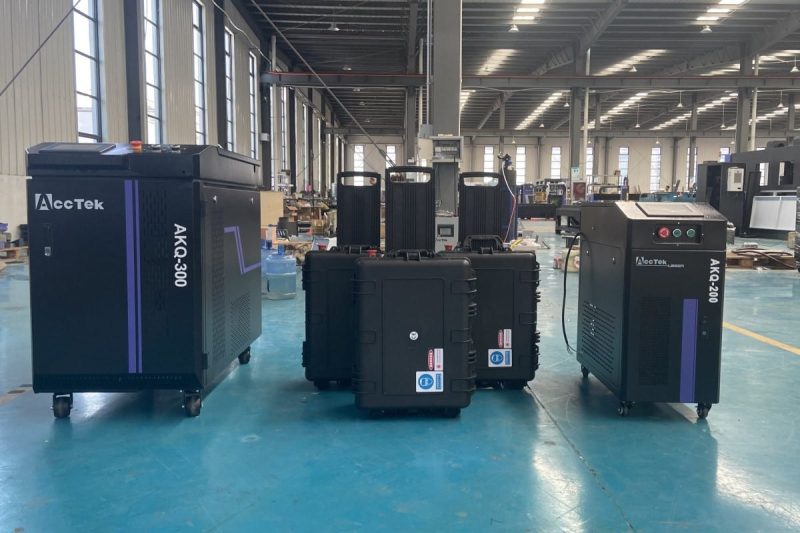
การเกิดเสียงรบกวนในการทำความสะอาดด้วยเลเซอร์
เสียงรบกวนที่เกิดขึ้นระหว่างการทำความสะอาดด้วยเลเซอร์เป็นประเด็นสำคัญที่ต้องพิจารณาเมื่อใช้เทคโนโลยีเลเซอร์ในการบำบัดพื้นผิวและทำความสะอาด การทำความเข้าใจแหล่งที่มาและปัจจัยที่ก่อให้เกิดเสียงรบกวนในระหว่างการทำงานของเครื่องทำความสะอาดด้วยเลเซอร์จะช่วยให้มั่นใจได้ว่าการผลิตจะปลอดภัยและเพิ่มประสิทธิภาพการผลิตได้ มาดูเสียงรบกวนที่เกิดขึ้นระหว่างการทำความสะอาดด้วยเลเซอร์กันอย่างใกล้ชิด
- เสียงจากการทำลายด้วยเลเซอร์: แหล่งกำเนิดเสียงหลักอย่างหนึ่งในการทำความสะอาดด้วยเลเซอร์คือกระบวนการทำลายด้วยเลเซอร์ เมื่อลำแสงเลเซอร์ที่มีความเข้มสูงกระทบกับพื้นผิวและโต้ตอบกับสิ่งปนเปื้อนหรือสารเคลือบ อาจทำให้สิ่งปนเปื้อนหรือสารเคลือบระเหย ทำลาย หรือระเบิดได้ การเปลี่ยนแปลงอย่างรวดเร็วเหล่านี้ก่อให้เกิดคลื่นกระแทกและการปล่อยเสียงซึ่งส่งผลให้เกิดเสียงโดยรวม
- เสียงสะท้อน: เสียงสะท้อนเกิดขึ้นเมื่อโมเมนตัมของวัสดุที่ถูกขับออกทำให้เกิดการสั่นสะเทือนและคลื่นเสียง เมื่อสิ่งปนเปื้อนถูกกำจัดออกจากพื้นผิวโดยใช้แรง เสียงสะท้อนนี้จะสร้างคลื่นเสียงที่ส่งผลต่อระดับเสียงโดยรวมของกระบวนการทำความสะอาด
- อนุภาคในอากาศและเสียงจากควัน: กระบวนการทำความสะอาดด้วยเลเซอร์จะก่อให้เกิดอนุภาค ก๊าซ และควันในอากาศ การเคลื่อนที่และการโต้ตอบกันของอนุภาคเหล่านี้ในอากาศอาจทำให้เกิดเสียงได้ โดยเฉพาะเมื่ออนุภาคเหล่านี้ชนกันเองหรือชนกับพื้นผิวอื่น ๆ ใกล้บริเวณที่ทำความสะอาด
- เสียงของระบบทำความเย็น: เครื่องทำความสะอาดด้วยเลเซอร์มักใช้ระบบทำความเย็นเพื่อรักษาอุณหภูมิการทำงานที่เหมาะสมของเครื่องกำเนิดเลเซอร์ ระบบเหล่านี้สร้างเสียงโดยเฉพาะจากพัดลมหรือปั๊มที่ใช้ในการหมุนเวียนสารทำความเย็น เสียงของระบบทำความเย็นอาจแตกต่างกันไปขึ้นอยู่กับการออกแบบและประสิทธิภาพ
- เสียงจากเครื่องสแกนและออปติก: การเคลื่อนที่ของเครื่องสแกนและออปติกภายในเครื่องทำความสะอาดด้วยเลเซอร์อาจก่อให้เกิดเสียงทางกล ส่วนประกอบเหล่านี้อาจก่อให้เกิดการสั่นสะเทือนและเสียงทางกลในขณะที่ลำแสงเลเซอร์ถูกเล็งและโฟกัสไปที่บริเวณเป้าหมาย
- เสียงจากท่อไอเสียและระบบระบายอากาศ: เครื่องทำความสะอาดด้วยเลเซอร์หลายเครื่องติดตั้งระบบระบายอากาศและระบบระบายอากาศเพื่อกำจัดสิ่งปนเปื้อนในอากาศและรักษาสภาพแวดล้อมการทำงานให้สะอาด ระบบเหล่านี้จะสร้างเสียงดังขณะหมุนเวียนและระบายอากาศออก
- เสียงรบกวนจากหน่วยควบคุม: หน่วยควบคุม รวมถึงอินเทอร์เฟซผู้ใช้และระบบคอมพิวเตอร์ อาจสร้างเสียงรบกวนทางอิเล็กทรอนิกส์ในระดับต่ำได้ แม้ว่าเสียงรบกวนนี้โดยปกติจะไม่ดังมาก แต่ก็สามารถส่งผลต่อทัศนียภาพเสียงโดยรวมใกล้กับเครื่องจักรได้
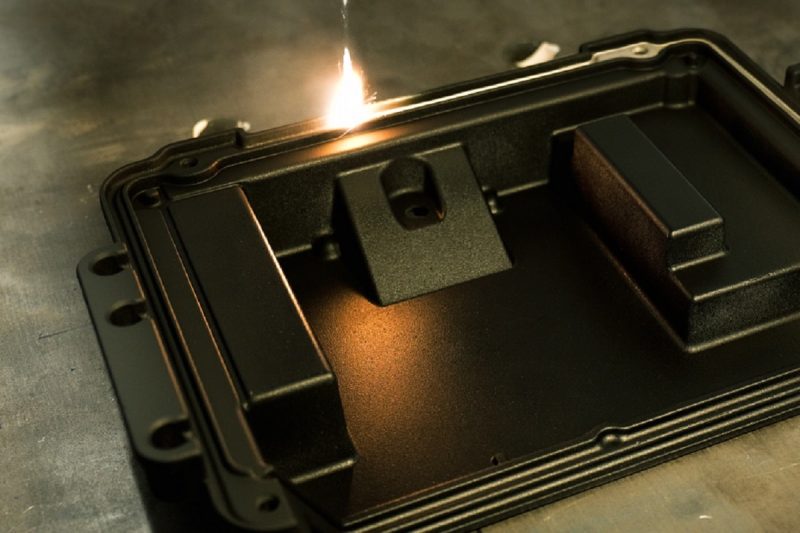
ปัจจัยที่มีผลต่อระดับเสียง
เสียงรบกวนที่เกิดจาก เครื่องทำความสะอาดเลเซอร์ เป็นผลจากปฏิสัมพันธ์ของปัจจัยที่ซับซ้อนหลายประการ และการทำความเข้าใจปัจจัยเหล่านี้สามารถช่วยจัดการและลดเสียงรบกวนในสภาพแวดล้อมอุตสาหกรรมได้ ปัจจัยหลายประการสามารถส่งผลต่อระดับเสียงได้:
- กำลังเลเซอร์: ปัจจัยที่สำคัญที่สุดประการหนึ่งที่ส่งผลต่อระดับเสียงของเครื่องทำความสะอาดด้วยเลเซอร์คือกำลังเลเซอร์ที่ใช้ เครื่องกำเนิดเลเซอร์ที่มีกำลังสูงกว่านั้นแม้จะมีประสิทธิภาพมากกว่าในการกำจัดสิ่งปนเปื้อน แต่โดยทั่วไปแล้วจะสร้างเสียงรบกวนมากกว่าเนื่องจากส่งพลังงานที่เพิ่มขึ้นไปยังพื้นผิว อย่างไรก็ตาม เครื่องทำความสะอาดด้วยเลเซอร์สมัยใหม่ได้รับการออกแบบและพัฒนามาเพื่อลดเสียงรบกวนให้เหลือน้อยที่สุด แม้แต่เครื่องทำความสะอาดด้วยเลเซอร์ที่มีกำลังสูงก็ตาม
- วัสดุที่กำลังทำความสะอาด: คุณสมบัติของวัสดุที่กำลังทำความสะอาดมีบทบาทสำคัญในการกำหนดระดับเสียงระหว่างการทำความสะอาดด้วยเลเซอร์ วัสดุต่างๆ ตอบสนองต่อการทำความสะอาดด้วยเลเซอร์ต่างกัน และอาจก่อให้เกิดเสียงรบกวนในระดับที่แตกต่างกัน วัสดุบางชนิด โดยเฉพาะโลหะ จะสร้างเสียงรบกวนมากขึ้นเมื่อได้รับความร้อนหรือถูกขัดด้วยเลเซอร์ เมื่อเปรียบเทียบกันแล้ว พลาสติกและวัสดุอินทรีย์มักจะสร้างเสียงรบกวนน้อยกว่า
- การออกแบบเครื่องจักร: คุณภาพการออกแบบและการประกอบเครื่องทำความสะอาดด้วยเลเซอร์มีบทบาทสำคัญในการกำหนดระดับเสียง เครื่องจักรที่ได้รับการออกแบบอย่างดีพร้อมคุณสมบัติลดเสียงรบกวนและส่วนประกอบคุณภาพสูงจะช่วยลดเสียงรบกวนขณะทำงาน เมื่อลงทุนซื้อเครื่องทำความสะอาดด้วยเลเซอร์ ขอแนะนำให้เลือกเครื่องจากผู้ผลิตที่มีชื่อเสียงซึ่งขึ้นชื่อเรื่องการเน้นย้ำเรื่องการลดเสียงรบกวนในการออกแบบ
- อุปกรณ์สนับสนุน: นอกเหนือจากส่วนประกอบหลักของเครื่องทำความสะอาดด้วยเลเซอร์แล้ว อุปกรณ์เสริม เช่น ระบบระบายอากาศและกลไกระบายความร้อนยังส่งผลต่อระดับเสียงโดยรวมอีกด้วย แม้ว่าส่วนประกอบเหล่านี้จะช่วยรักษากระบวนการทำความสะอาดที่ปลอดภัยและมีประสิทธิภาพ แต่ส่วนประกอบเหล่านี้ยังส่งผลต่อเสียงที่เกิดขึ้นได้ ดังนั้นจึงต้องพิจารณาส่วนประกอบเหล่านี้เมื่อประเมินผลกระทบด้านเสียงของเครื่องจักรเฉพาะ
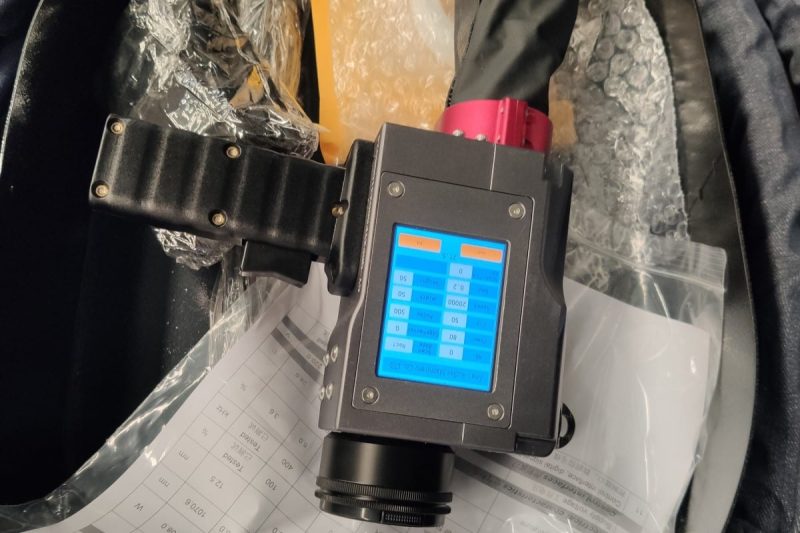
การวัดและประเมินเสียง
หากต้องการวัดและเปรียบเทียบระดับเสียงที่เกิดจากเครื่องทำความสะอาดด้วยเลเซอร์แต่ละเครื่องได้อย่างแม่นยำ จำเป็นต้องวัดระดับความดันเสียง (SPL) การวัดระดับความดันเสียง (SPL) มักแสดงเป็นเดซิเบล (dB) ค่า dB ที่ต่ำกว่าบ่งชี้ว่าการทำงานเงียบกว่า ในขณะที่ค่า dB ที่สูงขึ้นบ่งชี้ว่ากระบวนการทำงานมีเสียงดังกว่า การทำความเข้าใจว่าเสียงวัดได้อย่างไรจะช่วยประเมินการปล่อยเสียงจากเครื่องทำความสะอาดด้วยเลเซอร์ได้
ระดับเสียงที่เกิดขึ้นระหว่างการทำงานของเครื่องทำความสะอาดด้วยเลเซอร์โดยทั่วไปจะอยู่ระหว่าง 65 ถึง 85 เดซิเบล เพื่อให้เข้าใจเรื่องนี้ได้ดีขึ้น ต่อไปนี้เป็นการเปรียบเทียบระดับเสียงทั่วไป:
- การสนทนาปกติ: 60-70 เดซิเบล
- การจราจรในเมือง: 85-90 เดซิเบล
- ค้อนเจาะ: 100-120 เดซิเบล
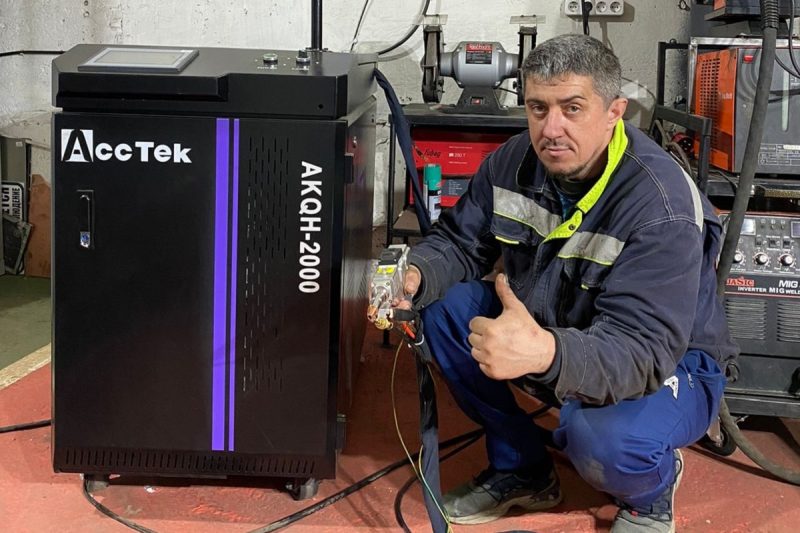
มาตรการลดเสียงรบกวน
หากเสียงรบกวนที่เกิดจากเครื่องทำความสะอาดเลเซอร์ยังคงเป็นปัญหาสำหรับผู้ปฏิบัติงานและสภาพแวดล้อมโดยรอบ สามารถใช้กลยุทธ์และมาตรการต่างๆ เพื่อลดระดับเสียงได้ ดังนี้:
- เลือกเครื่องที่ลดเสียงรบกวน: เลือกเครื่องทำความสะอาดด้วยเลเซอร์ที่ออกแบบมาเพื่อลดเสียงรบกวน ผู้ผลิตที่มีชื่อเสียงมักลงทุนด้านการวิจัยและพัฒนาเพื่อสร้างเครื่องที่เงียบกว่าและมีประสิทธิภาพมากขึ้น มองหาคุณสมบัติต่างๆ เช่น การออกแบบตัวเครื่องที่ดีขึ้น ฉนวนกันเสียง และระบบระบายความร้อนขั้นสูงเพื่อการทำงานที่เงียบกว่า
- จัดให้มีอุปกรณ์ป้องกันการได้ยิน: แม้ว่าระดับเสียงของเครื่องทำความสะอาดด้วยเลเซอร์จะอยู่ในขีดจำกัดที่ยอมรับได้ แต่ก็ยังคงมีความรอบคอบที่จะจัดหาอุปกรณ์ป้องกันการได้ยินที่เหมาะสมให้กับผู้ปฏิบัติงาน เช่น ที่อุดหูหรือที่ครอบหู ซึ่งช่วยให้มั่นใจได้ถึงความปลอดภัยและความสบายในระหว่างที่เครื่องทำงานเป็นเวลานาน
- ปรับการตั้งค่าเครื่องให้เหมาะสม: การปรับกำลังเลเซอร์และการตั้งค่าเครื่องสามารถช่วยลดระดับเสียงได้ในขณะที่ยังคงให้ผลลัพธ์การทำความสะอาดที่มีประสิทธิภาพ การลดกำลังเลเซอร์หรือปรับความเร็วในการสแกนอาจทำให้การทำงานเงียบลง แต่การทำความสะอาดอาจมีประสิทธิภาพน้อยลง ดังนั้นควรหาสมดุลที่เหมาะสมระหว่างกำลังและเสียงรบกวน
- แยกเครื่อง: พิจารณาแยกเครื่องทำความสะอาดด้วยเลเซอร์ในห้องหรือตู้เก็บเสียงแยกต่างหากเพื่อเก็บเสียง ตู้เก็บเสียงเหล่านี้ได้รับการออกแบบมาโดยเฉพาะเพื่อลดการส่งผ่านเสียง และสามารถมีบทบาทสำคัญในการลดผลกระทบของเสียงต่อสภาพแวดล้อมโดยรอบ
- การบำรุงรักษาและการตรวจสอบ: การตรวจสอบการบำรุงรักษาเป็นประจำจะช่วยให้มั่นใจได้ว่าส่วนประกอบทั้งหมดของเครื่องทำความสะอาดเลเซอร์ของคุณอยู่ในสภาพที่เหมาะสม ชิ้นส่วนที่เสียหายหรือสึกหรออาจทำให้มีระดับเสียงที่ดังขึ้น ในขณะที่เครื่องจักรที่ได้รับการบำรุงรักษาอย่างดีจะมีโอกาสสร้างเสียงดังมากเกินไปน้อยกว่า
- การฝึกอบรมผู้ปฏิบัติงานอย่างเหมาะสม: การให้ความรู้แก่ผู้ปฏิบัติงานเกี่ยวกับขั้นตอนการทำงานและการบำรุงรักษาเครื่องจักรสามารถช่วยลดเสียงรบกวนได้ ผู้ปฏิบัติงานที่มีทักษะสามารถทำการปรับเปลี่ยนและป้องกันเพื่อให้การทำงานเงียบลงได้
- ใช้ระบบระบายอากาศและระบายอากาศที่เหมาะสม: ระบบระบายอากาศและระบายอากาศที่มีประสิทธิภาพสามารถช่วยลดเสียงรบกวนได้โดยการกำจัดสารปนเปื้อนในอากาศและผลิตภัณฑ์รองที่เกิดขึ้นระหว่างกระบวนการทำความสะอาดด้วยเลเซอร์ ระบบระบายอากาศที่ออกแบบมาอย่างดียังช่วยสร้างสภาพแวดล้อมการทำงานที่ปลอดภัยและสะดวกสบายยิ่งขึ้นอีกด้วย
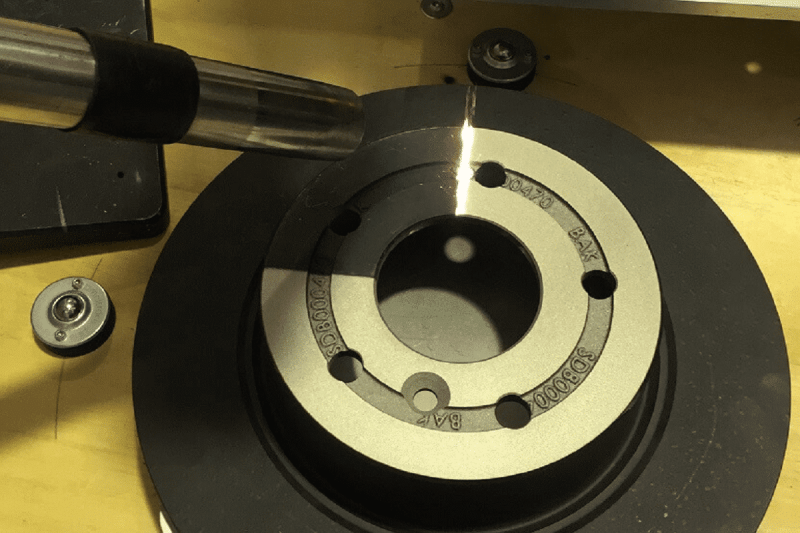
การประยุกต์ใช้งานจริงของเครื่องทำความสะอาดด้วยเลเซอร์
เพื่อแสดงให้เห็นถึงการใช้งานจริงและประโยชน์ของเครื่องทำความสะอาดเลเซอร์ มาสำรวจอุตสาหกรรมและสถานการณ์ต่างๆ ที่ได้รับการพิสูจน์แล้วว่าเครื่องเหล่านี้มีมูลค่าสูงกัน
- การผลิตและยานยนต์: เครื่องทำความสะอาดด้วยเลเซอร์ใช้กันอย่างแพร่หลายในโรงงานผลิตและโรงงานยานยนต์เพื่อขจัดสนิม สี และสารเคลือบออกจากชิ้นส่วนโลหะ ซึ่งมีความสำคัญอย่างยิ่งในอุตสาหกรรมที่การบำบัดพื้นผิวเป็นขั้นตอนสำคัญในกระบวนการผลิต การใช้เครื่องทำความสะอาดด้วยเลเซอร์ช่วยให้ผู้ผลิตสามารถเพิ่มคุณภาพและอายุการใช้งานของผลิตภัณฑ์ได้พร้อมลดผลกระทบต่อสิ่งแวดล้อมให้เหลือน้อยที่สุด
- การบูรณะมรดกทางวัฒนธรรม: เทคโนโลยีการทำความสะอาดด้วยเลเซอร์มีบทบาทสำคัญในการบูรณะและรักษาโบราณวัตถุทางประวัติศาสตร์และวัฒนธรรม งานศิลปะ ประติมากรรม และโครงสร้างสถาปัตยกรรมสามารถทำความสะอาดสิ่งปนเปื้อนและสิ่งปนเปื้อนได้โดยไม่ทำลายวัสดุเดิม การใช้งานนี้ช่วยให้บูรณะสมบัติทางวัฒนธรรมได้อย่างแม่นยำและระมัดระวังสูงสุด
- การบินและอวกาศ: ในอุตสาหกรรมการบินและอวกาศ ความแม่นยำและความปลอดภัยถือเป็นสิ่งสำคัญที่สุด เครื่องทำความสะอาดด้วยเลเซอร์ใช้เพื่อรักษาความสมบูรณ์ของส่วนประกอบของเครื่องบินโดยการกำจัดการกัดกร่อน สี และสารเคลือบ ความแม่นยำของการทำความสะอาดด้วยเลเซอร์ช่วยให้มั่นใจได้ว่าส่วนประกอบที่สำคัญจะอยู่ในสภาพที่ดีที่สุดในขณะที่ปฏิบัติตามมาตรฐานความปลอดภัยที่เข้มงวด
- การก่อสร้างและการปรับปรุงใหม่: ในโครงการก่อสร้างและการปรับปรุงใหม่ การทำความสะอาดด้วยเลเซอร์เป็นวิธีการที่หลากหลายและมีประสิทธิภาพในการบูรณะอาคารและโครงสร้างเก่า โดยการขจัดชั้นของสิ่งปนเปื้อนและสารเคลือบเก่าออกไป ทำให้สามารถฟื้นฟูรูปลักษณ์เดิมของคุณลักษณะทางสถาปัตยกรรมได้ นอกจากนี้ การทำความสะอาดด้วยเลเซอร์ยังช่วยลดฝุ่นและเศษวัสดุ ช่วยรักษาสภาพแวดล้อมการทำงานให้สะอาด
- การต่อเรือและการเดินเรือ: การใช้งานทางทะเลได้รับประโยชน์จากเครื่องทำความสะอาดด้วยเลเซอร์ที่สามารถขจัดสนิมและสิ่งสกปรกออกจากตัวเรือและอุปกรณ์ ซึ่งไม่เพียงแต่ช่วยปรับปรุงสมรรถนะของเรือและประสิทธิภาพการใช้เชื้อเพลิงเท่านั้น แต่ยังช่วยลดผลกระทบต่อสิ่งแวดล้อมโดยป้องกันไม่ให้สิ่งมีชีวิตเกาะติดและแพร่กระจายพันธุ์ต่างถิ่น
สรุป
- [email protected]
- [email protected]
- +86-19963414011
- หมายเลข 3 โซน A เขตอุตสาหกรรม Luzhen เมือง Yucheng มณฑลซานตง

